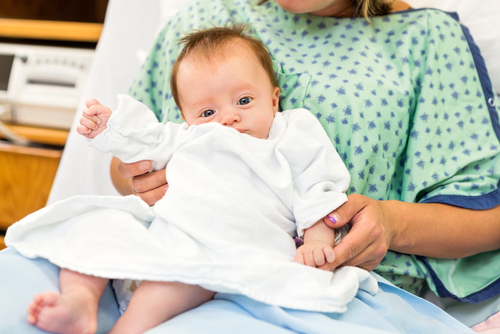Reproductive Options for EDS Patients

If you have Ehlers-Danlos syndrome (EDS) and want to have biological children, you may be worried about passing the disease on to them or how the disease could affect your pregnancy. Here is information about the disease, pregnancy, and your reproductive options.
How is EDS inherited?
Children can inherit EDS from their parents or, in some cases, as a result of a de novo mutation. These de novo mutations occur in the sperm or egg of one of the parents, or in the embryo during development.
Some forms of EDS have a dominant inheritance pattern while others have a recessive inheritance pattern. In dominant inheritance, children only need to inherit one faulty copy of a gene from either parent in order to have the disease. In recessive inheritance, the disease only develops if the child inherits a faulty copy of a gene from both parents.
Can EDS affect my ability to get pregnant?
The effect of EDS on your fertility will depend on the type of EDS you have and the severity of your symptoms. A survey of 1,352 women with EDS found that 43.3% of them had fertility issues and 74.2% reported pain during intercourse, with 8% saying that they avoided intercourse due to pain.
How can EDS affect my pregnancy?
EDS can also affect your pregnancy depending on the type of disease and severity of symptoms. According to the survey, 54.5% of the women who became pregnant had at least one miscarriage, 29.6% had a premature birth, and 5.1% had ectopic pregnancies. An ectopic pregnancy is when the fertilized egg grows outside of the uterus.
A review article comparing the frequency of pregnancy complications between women with EDS and the general population found that patients with EDS were more likely to have a premature delivery, have bleeding during pregnancy, and undergo a cesarean section delivery. Depending on the type of EDS, patients may also be at an increased risk of severe bleeding after pregnancy.
Because of the potential risks associated with becoming pregnant and passing on the disease, you may want to discuss reproductive options with your doctor and a genetic counselor.
What is prenatal diagnostic testing?
If you are able to get pregnant but are concerned about your child having EDS, you can undergo prenatal diagnostic testing. Here, clinicians test the DNA of the fetus to look for EDS-causing mutations.
The two main methods used to collect the DNA from the fetus are chorionic villus sampling (CVS) and amniocentesis.
Doctors usually perform CVS when the fetus is 10 to 12 weeks. During the procedure, they insert a long needle through the mother’s abdomen or a catheter through her vagina to collect a sample of the small finger-like extensions, called villi, of the placenta. The placenta provides oxygen and nutrients, and contains genetic material from the fetus.
Amniocentesis is performed when the fetus is between 15 and 20 weeks. The doctor inserts a long needle into the mother’s abdomen to collect a small sample of the amniotic fluid that surrounds the fetus. This fluid contains cells from the fetus, which carry its DNA.
What is IVF and preimplantation genetic testing?
If you are having a hard time becoming pregnant, in vitro fertilization (IVF) may be an option. During IVF, the patient takes fertility drugs to boost the number of eggs that mature in her ovaries. Doctors then collect the eggs, which are mixed with sperm in a laboratory. The fertilized eggs are then placed in the woman’s uterus.
IVF can also be combined with preimplantation genetic diagnosis to check the embryos for EDS before doctors place them in the uterus. Clinicians can analyze a small sample of cells from the embryos for EDS-causing mutations. Only embryos without mutations are then placed in the patient’s uterus.
What are other reproductive options?
Other options are available if you’re concerned about passing EDS onto your child or the risks of pregnancy are too great.
You can use donated sperm or eggs for IVF to reduce the risk of having a child with the disease. However, the child would not be genetically related to one of the parents.
If you are at high risk for pregnancy complications due to EDS, you could choose to have a surrogate carry your baby. In surrogacy, the embryos created using IVF are placed into the uterus of the surrogate.
Last updated: Jan. 27, 2021
***
Ehlers-Danlos syndrome is strictly a news and information website about the disease. It does not provide medical advice, diagnosis, or treatment. This content is not intended to be a substitute for professional medical advice, diagnosis, or treatment. Always seek the advice of your physician or other qualified healthcare providers with any questions you may have regarding a medical condition. Never disregard professional medical advice or delay in seeking it because of something you have read on this website.






